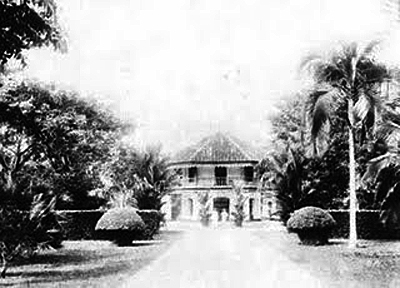 |
| Sumber : www.orangperak.com |
Yong Wah Hospital or the Chinese Pauper Hospital was the first established hospital in Federated Malay States. Established in 1880 to treat the Chinese coolies and tin-miners who often sick and suffered from various diseases, such as diarrhoea, cholera, malaria, beriberi, dysentery, and pulmonary diseases. Its establishment was developed parallel with the significant economy growth in the town.
The hospital gained financial supports from the Chinese merchants while the State Government aided medical apparatuses, medicines and nursing staff. With consideration to the poor people's welfare, the hospital only charged a minimum fee of 50 cents per annum from the poor coolies. The hospital's policies worked out efficiently for the first six months since of its establishment, but it was later occurred difficulties on collecting the fees. The reason was most coolies unable to settle their medical fees due to the low income.
Therefore, by the end of the year 1880, the State Government took over full responsibility on the Yong Wah Hospital, and shifted to its current location at the Main Road, and renamed with Taiping General Hospital. The maintenance cost of the hospital were so high, that Sir Hugh Low, the then British Resident of Perak levied a capitation fee of one dollar, where everyone lives in Taiping including within the district will be charged annually, and a health coupon will be produced for those who pay for the fees. The fees were used as contribution to the expenses for maintaining the hospital, with no profit gained from the collections. All food, medicine and attendance were given free-of-charge, but the Chinese community strongly objected to this tax, because it was never levied in other Malay states, and the system was later abolished in 1884.
The institution consists of many wards and other buildings arranged in carefully laid out grounds, planted with palms, beautiful trees and flowering shrubs, which is very restful to the eye. The aim of the hospital was to curb diseases from spreading among the coolies, reduce the rate of death, and increase the rate of growth; the purpose of the establishment had finally turned a positive result. The number of death and diseases decline gradually in the district, and surprisingly, the rate of birth had increased tremendously, and Taiping continued to prosper in economy growth.
The institution was under Dr. Hamilton Wright the first Health Inspector, where the hospital able to sustain 900 patients at one time, according to Sir Cecil Clementi's report during his state visits. In 1881, the hospital went a major renovation and suspension. The overall renovation cost was estimated about 2,100 straits dollars. By the year 1884, an additional ward and a dispensary were added; the hospital's drainage system also improved with the total cost of 9,379 straits dollars.
Also at the same year, total 3,068 cases handled by the hospital (total about 13000 cases in Perak), where 2,501 cases involved with beriberi. The main cause of the beriberi was due to the malnutrition and improper sanitation taken by the coolies. Taiping also housed a lunatic asylum hospital (within the hospital compound) and a prison hospital (in the prison) under the supervision of Mr Thomas Prendergast. In 1906, the Government medical staff extended the services for outpatients particularly the rural areas. The percentage of deaths to cases treated was 18.08% in Taiping, compare to other 13 hospitals in Perak.
The numbers of patients treated in the course of a year run to many thousands, and the sums expended by the Government on the Medical Department, with all its surgeons and assistants, nurses, dispensers, dressers, attendants, cooks, gardeners, gate-keepers, etc., amount to a very large total. It was reported that many of the government's expenses flowed to the hospital.
Therefore, by the year 1890, a Sanitary Board was established to control and monitor the health and cleanliness of the town. On 3 February 1896, the hospital was installed with X-Ray equipment, and marked as the first hospital in Malaya and also Far East Asia to have those facilities. Mr. Leonard Wray chaired the opening ceremony, and the first patient who used the X-Ray was a pomfret.
In 1906, the Medical Department reported that 318, 000 straits dollars were funded in Perak for development in every sector. By the year later, the population in Taiping as well as where else in Perak had increased gradually as a result of good health care been taken seriously by the government. Taiping being the pioneer for a health institution was later adopted by other towns in Malaya, and later almost every town in Malaya has a hospital.
(Reference: https://en.wikipedia.org/wiki/Taiping_Hospital)





